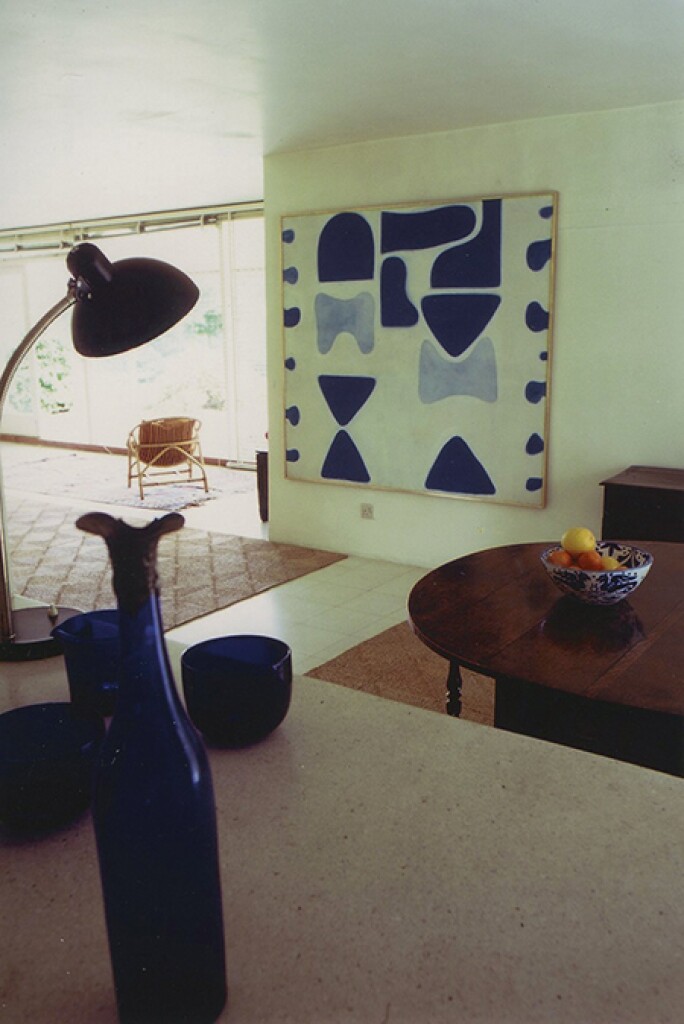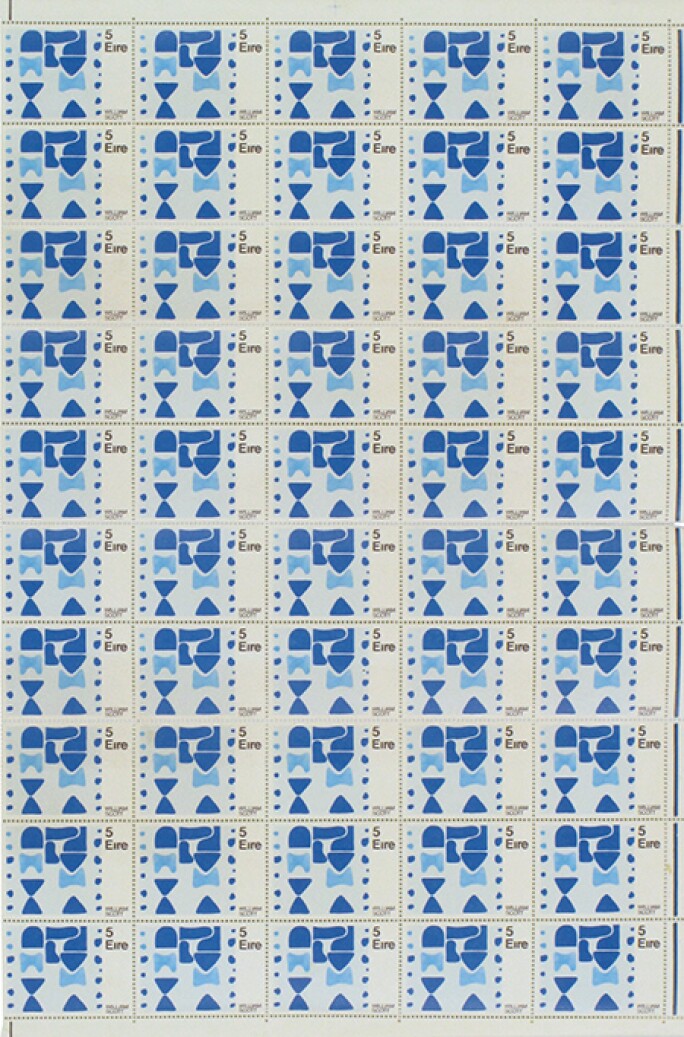A highlight of our upcoming 12 June Modern & Post-War British Art Evening sale, William Scott’s Berlin Blues 2, 1963, has an unusual and distinguished history. Scott was one of the primary contacts between the New York Abstract Expressionists and the avant-garde community around the Bath Academy of Art, Corsham, (alma mater of such luminaries as Howard Hodgkin, Gillian Ayres, and Peter Lanyon amongst many others) where he was the Senior Painting Master, this work has a specifically European dimension.
The work’s origins lie in an artist-in-residence programme that William Scott undertook in November 1963. Together with his wife, Mary, he moved to Berlin on the invitation of the Ford Foundation to take part in the Berliner Künstlerprogramm, an artist-in-residence programme, run by the DAAD (German Academic Exchange Service). The residency lasted 12 months and upon their arrival the couple immediately plunged themselves into the artistic and cultural life of the city. Scott was able to work in a large studio in the Künstakademie in West Berlin and formed close friendships with Xenakis, the Greek composer, and Hans Scharoun, the Greek architect, as well as the other artists on the Berliner Künstlerprogramm such as André Masson, Emilio Vedova and Antonio Saura.
Living and working in Berlin inspired Scott to produce a distinctive group of large-scale canvases, the Berlin Blues, predominantly painted upon his return to the UK. These works, including Berlin Blues 2, formed the basis for his solo exhibition at the Hanover Gallery, London, 1965. The stimulus of Berlin was both cerebral - meeting and working with Berlin creatives - and tangible: the eponymous colour of the series was a pigment Scott discovered whilst in Berlin. This group of works were hung together as a group during Scott’s Tate retrospective in 1971.
Throughout his career, Scott’s work was acquired by a number of premier architects, including Eugene Rosenberg and Irish architect Dr Ronald Tallon, who owned the present work. Tallon was arguably Ireland’s most influential modernist architect and the inaugural recipient of the James Gandon Medal for Lifetime Achievement in Architecture. His firm, Scott Tallon Walker, actively engaged in commissioning and purchasing artwork to complement their architectural projects, including pieces by Patrick Heron and Louis le Brocquy, and Tallon was himself an avid collector. Tallon initially purchased Berlin Blues 1 for the Bank of Ireland collection, later donated by the bank to the Irish Museum of Modern Art, where it is now held. Tallon subsequently persuaded Mary Scott to part with Berlin Blues 2 after he saw it hanging in the Scotts’ London house on Edith Terrace (in conversation, October 2008, quoted in Sarah Whitfield (ed.), William Scott Catalogue Raisonné of Oil Paintings, Volume 3 1960-1968, Thames & Hudson in association with the William Scott Foundation, 2013, p.202).
Scott evidently deemed the present work of great significance within his oeuvre as he selected it as the basis for a stamp design he created for the Eire postal service. His son Robert’s design company, Unit Five Design Ltd, was responsible for the design and typography of the stamp. On 19 January 1973 Scott wrote in a letter, ‘We are just back from New York and I was shown the design of the stamp (which I have approved) I hope it meets with approval by the Republic of Ireland! Perhaps it’s the first abstract stamp?’ (William Scott quoted ibid). The 5 pence stamp was issued by An Post, Ireland, on 9th August 1973 and 8 million stamps were printed.
We will be holding an In Conversation with Robert Scott, the Artist’s son, on Sunday 10th June 2018 at 2pm, at our New Bond Street Galleries as part of our Sunday at Sotheby’s programme of talks and events. Please email mobdbrit@sothebys.com to reserve your place.
Explore more from The Art of the Season at Sotheby's






